What are the consequences of a cerebral hemorrhage?
introduction
A cerebral hemorrhage in humans is an absolute medical emergency that is associated with life-threatening risks. The problem of cerebral haemorrhage is not primarily the loss of blood. Because the brain is surrounded by our skull bones, the volume is limited. If there is now a bleeding in the brain, this new mass cannot move in another direction and the brain is displaced.
It is precisely this repression that triggers the life-threatening consequences of a cerebral haemorrhage, as the brain can no longer perform its normal functions. Thus, the cerebral haemorrhage belongs to the umbrella term for strokes. The consequential damage suffered by patients after acute treatment for a cerebral hemorrhage depends on many factors. In addition to the time of treatment and the extent of the bleeding, this includes the precise location of this bleeding.
The consequential damage has a very broad spectrum, ranging from no symptoms at all to severe mental and physical limitations.

coma
A coma is one of the potentially serious consequences of a major cerebral hemorrhage, as this can cause brain structures to be displaced and they can no longer perform their normal function. The term coma describes a state in which the patient is unconscious and cannot be woken up by external stimuli such as noise or pain. It is the most severe level of unconsciousness in humans.
This state of consciousness is often associated with the loss of reflexes. The extent to which the brain is still able to maintain basic body functions, such as breathing, depends on the exact degree of the coma. It is not uncommon for patients with massive cerebral hemorrhage to fall into a coma without or with delayed therapy. Depending on the severity, life-sustaining measures such as ventilation must now be carried out. Patients who are in a coma as a result of a major cerebral hemorrhage tend to have a poorer prognosis.
Read more on the topic: What are the chances of survival with a cerebral hemorrhage?
Artificial coma
The term artificial coma is similar in many respects to the actual coma. Here, too, there is a high degree of unconsciousness that cannot be lifted by external stimuli. The big difference, however, is the cause, as an artificial coma is caused by targeted medication and is reversible after discontinuing these medications. One could also speak of long-term anesthesia. In medicine, the artificial coma is mainly used in the intensive care unit, since the patients do not feel any pain in this state. However, an artificial coma usually requires artificial respiration in order to maintain the body's functions.
Read more on this topic at: Artificial coma
Consequences of a cerebral haemorrhage in the cerebellum
The most common cause of hemorrhage in the cerebellum is greatly increased blood pressure, which is called in medicine Hypertensive crisis is described. The acute symptoms and the subsequent consequences depend primarily on the size and location. In addition, the period until the start of therapy plays a major role in the prognosis. If there is a minor cerebral hemorrhage, it can initially lead to a coordination disorder, a so-called Ataxia, come, mostly through one Nystagmus, the rapid movement of the eye back and forth.
If these symptoms are recognized too late and therapy is initiated too late, the increased pressure can cause permanent damage to the cerebellar tissue and the motor disorders can persist. In most cases, however, a good prognosis can be assumed for minor bleeding so that those affected do not suffer any consequential damage. If the bleeding is larger, however, there is an acute risk of death in the case of a cerebellar haemorrhage, as the increased intracranial pressure can spread to the brain stem, which controls basic functions that are important for survival.
Read more on the topic: Cerebellar damage, neurophysiological physiotherapy
Consequences of a cerebral hemorrhage in the brain stem
A cerebral hemorrhage in the area of the brain stem represents an absolute neurological emergency that requires immediate treatment. Many basic functions of our body are controlled in the brain stem. This includes breathing, regulating our heart rate, pupil movements and much more. Motor fibers that connect the brain with the spinal cord also run through here.
If bleeding now occurs, the pressure in this area increases and structures are clamped with an associated loss of function. Since the brain stem controls such basic functions, such functional failures have such immensely life-threatening consequences. Respiratory arrest, deep coma, complete paralysis of the body and other symptoms can result, which can persist permanently.
In the case of a brainstem hemorrhage, for example, the prognosis is extremely poor. Despite modern technology, mortality is still between 30-50% today. Only about 15% of those affected survive and have no major disabilities. The three-year survival rate is 35%.
Difficulty concentrating
In addition to the consequences described above that can arise as a result of a cerebral hemorrhage, the development of a concentration disorder is probably one of the most common long-term consequences of a cerebral hemorrhage. However, it is not possible to make a precise statement as to whether or not such concentration disorders will occur in a particular patient. The term concentration disorder encompasses two phenomena. On the one hand, it is often more difficult for those affected to concentrate on several things at the same time, and on the other hand, the duration of attention can be significantly reduced. The extent of this disorder differs from patient to patient and can range from slight restrictions in reading to clearly restrictive deficits in attention.
Read more on the topic: Concentration training
Slurred speech
In some cases it happens that long-term consequences such as slurred speech occur despite successful therapy of the cerebral haemorrhage. This speech disorder is based on the fact that the brain area, which is responsible for the motor control of the muscles involved in speaking, is damaged by the increased intracranial pressure and can no longer perform its function with the same precession as it was before the cerebral hemorrhage. However, since our brain can often compensate for such functional restrictions after a long period of time, it often happens that this long-term effect decreases over time or even disappears completely. In any case, speech therapy training is advisable for language problems in order to promote this compensation process.
death
Since a cerebral haemorrhage can take a life-threatening course, the suspicion is already considered to be a medical emergency, which must be investigated immediately using suitable diagnostics. But despite the mostly rapid diagnosis and adequate therapy, it is not always possible to prevent a fatal outcome. The mortality rate for a cerebral hemorrhage as a result of high blood pressure is around 20%. If the bleeding is caused by a blood clotting disorder, this number is even higher. The prognosis of a cerebral haemorrhage depends largely on the size and location. Probably by far the worst prognosis is bleeding in the area of the brain stem with a mortality rate of 30-50%.
Epileptical attack
Another long-term consequence that is possible after a brain hemorrhage is an epileptic seizure. According to new studies, it is assumed that around 10% of those affected will suffer from epileptic seizures in the course of their life as a result of cerebral hemorrhage. Most seizures occur within the first three days. If several seizures occur even after a long time, one speaks of the diagnosis of epilepsy. It has been shown that prophylactic use of anti-epileptic drugs did not lead to a significant reduction in such attacks and is therefore not useful.
The exact mechanism that leads from a cerebral haemorrhage and the associated brain damage to epilepsy is still not understood in detail. However, it is assumed that the damaged areas of the brain cause other areas to show increased activity or that the damaged areas can no longer be adequately inhibited. This leads to increasing excitement, which can ultimately end in an epileptic fit.
Read more on the topic: Medicines for epilepsy
depression
About a third of all patients who have survived a stroke, which also includes cerebral hemorrhage, develop depression in the course of the healing process. At first it is not easy to identify the signs of depression, such as indifference (apathy) or to differentiate concentration disorders from the direct consequences of a stroke. Such a diagnosis therefore usually requires psychological advice.
In addition to further impairing the patient's quality of life, depression can also negatively affect the course of treatment. Thus, depression should definitely be treated with adequate therapy. New research suggests that the development of depression as a result of strokes is not only due to the psychological burden and stress of the patient, but is also caused by nerve cell damage, which is usually the result of cerebral hemorrhage.
Read more on the topic:
- How can you prevent depression?
- Therapy for depression
- How can you recognize depression?
Consequences of a cerebral hemorrhage in children / babies
The long-term consequences of a cerebral haemorrhage in children, as in adults, depend above all on the size, location and duration until the start of therapy. In contrast to adults, however, the consequences of such a bleeding can not only be acute failures, but also developmental disorders, which often only appear after several months to years and usually cannot be predicted.
In addition to language and motor development, such developmental disorders include, above all, cognitive limitations, such as poor concentration or reduced intelligence. In the case of severe cerebral hemorrhage, there may be more pronounced restrictions on development, which can lead to a severe handicap of the child. It is therefore important to visit the pediatrician or neurologist more often with children and babies who have suffered a cerebral haemorrhage in the following years so that such consequential damage can be recognized as early as possible.
Read more on the topic: Child development, motor learning




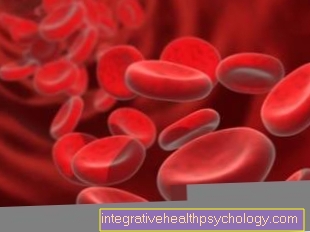




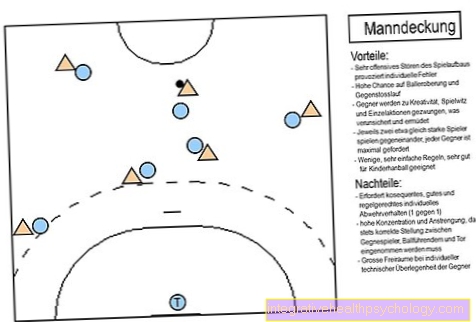





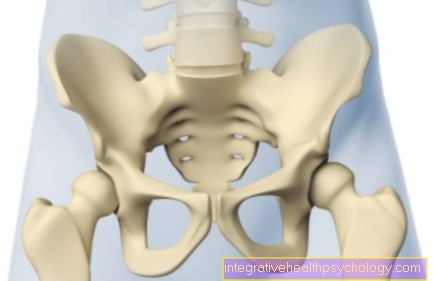


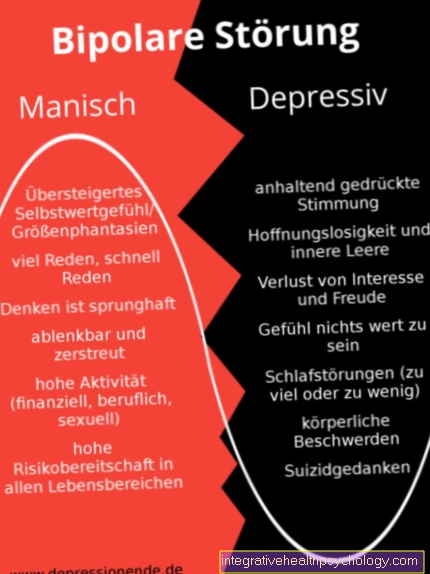

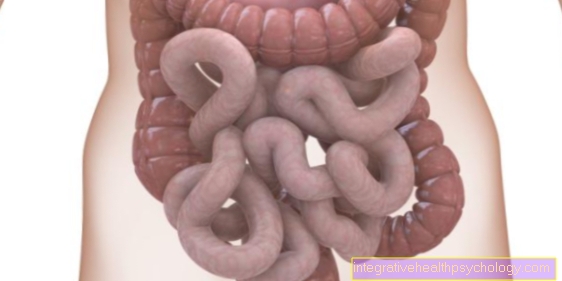

.jpg)






